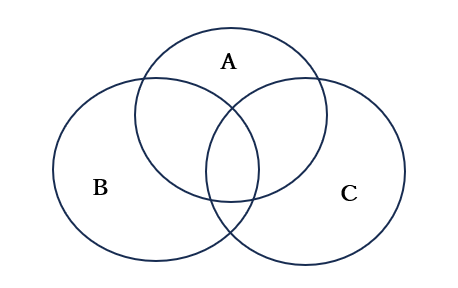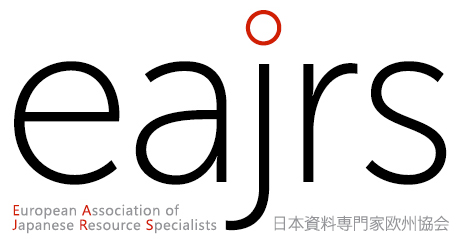![]() Yabuta Yutaka
Yabuta Yutaka
Hyogo Prefectural Museum of History. Director
Keynote: 日本の「旧家」に眠る資料-政事・文事・家事
インターネット環境が広がるなか、日本研究が、世界的な広がりを持って進んでいる。その場合、海外からアクセスされるのは、第1に主に活字と画像からなる文献データー、第2に博物館・図書館・文書館・資料館などに所蔵される記録や古文書の類であろう。
前者の場合、すでに編著者によってデーターは捉え直されており、オリジナルでないことは自明である。それに対し後者の場合はどうか、と言えば、これもまた収蔵された館それぞれの約束事に従って、図書分類よろしく整理されている。なぜならそれが、資史料の寄贈を受けた公的機関が、資料公開をするに当たっての前提だからである。そこにあるのは、「新秩序」の下にある資史料である。
したがってそこではもはや資史料が、ある個人宅に、どういう風に集積し、伝来され、所蔵されていたか、すなわち「旧秩序」を知る手掛かりはない。新秩序から旧(原)秩序に至る途は塞がれている。
ところが日本国内であればしばしば、旧秩序に接近することが可能である。それは主に農工商の身分で、都市と農村に住んだ「旧家」と呼ばれる家々が残っているからである。そこには16世紀以降、19世紀に至る歴史的な、そして地域的な経験が、さまざまな資史料・文化財として――最近は「歴史文化遺産」という用語も生まれている――遺されている。その際、旧家は、建造物そのものがまず文化財として注目されるが、同時に、あるいは遅れて、家蔵の美術品・図書古典籍・歴史史料・什器と道具といった資史料の調査が進む。その瞬間、「蔵のとびら」が開かれる。
そうした機会を、日本に住む研究者はしばしば持つことができる。海外の研究者とくらべたアドバンテージであるが、その機会を日本全国に提供したのは、府県から市町村に至る自治体が進める歴史書の編さん、つまり「自治体史編さん」事業の展開である。
それは戦後歴史学の潮流の基礎をなすもので、多くの日本史研究者・文化財関係者が参画し、今日に至っている。かく言うわたしもその一人で、その実践を経て、歴史学上の諸問題を論じてきた。しかし研究者人生の終盤に当たり、またアナログ世界が激変する状況下にあって、これまでの実践を総括する必要を覚える。それは、「旧家の世界」とは何か、という問いである。
それは本報告の主題であるが、あらかじめ仮説的に提示するならば、A政事、B文事、C家事という三つの分野の重なりとしてある。

A「政事」とは村の庄屋や町年寄、十人両替・札差・御用町人といった当時の政治権力との間でもつ関係性をいう。近世日本の政治体制に規制された枠組みである。
おもに村落史や地域政治史の主題として活用され、分厚い研究蓄積がある。
B「文事」とは、能や謡・茶事・書画・医事といった文化の諸分野での実践を指し、都市のみならず地方にも文人が多数、出現した状況を念頭に置けば、容易に理解されるだろう。
博物館・美術館に収蔵されているケースがもっとも高い分野で、美術史に加え、近年では書物文化史として研究が進んでいる。
C「家事」には、家屋という構造物と、家族・親族という人間集団、そして家系・家譜などが含まれる。旧家のもっとも基底的な部分であるが、豪農商・名望家と呼ばれ、歴史研究の対象となってきた。また一方、女性史やジェンダー分析の対象にもなっている。
こうしてそれぞれが日本研究の基礎資料となってきたが、最大の問題は、A「政事」、B「文事」、C「家事」が、相互にどう関係しているか、検討されていないことである。
以下、具体的に論じることで、三者の関係を通して、「旧家の世界」を提示したい。
Keynote: Materials from Old Houses in Japan: Politics, Culture, and Household Matters
With the expansion of the digital humanities, the field of Japanese Studies is progressing on a global scale. Within this environment, researchers wishing to access archival materials from abroad will first and foremost make use of digitized texts that have been transcribed and imaged, followed by historical records housed in museums, archives, and research libraries. However, transcribed texts have been edited and are therefore no longer original. In addition, museums, archives, and research libraries organize materials according to their respective cataloguing requirements. This is because public institutions receiving donations of archival materials have to make these materials available to the public. The materials are thus subjected to a ‘New (Archival) Order’.
As a result, there is no way of knowing who originally compiled these materials and how they were handed down and held in private homes, thereby obscuring the ‘Old (Archival) Order’ and irretrievably separating it from the ‘New (Archival) Order’.
However, it is often possible to access the ‘Old (Archival) Order’ in Japan, mainly because of the surviving houses of old families who were of peasant, craftsmen, or merchant stock and who lived in towns and villages. In these houses, historical and local experiences from the sixteenth through the nineteenth centuries have been stored in the form of diverse materials and cultural assets. These have recently been coined 'historical-and-cultural-heritage'. Initially, the architectural structure of these old houses tends to draw the attention of researchers as a cultural asset in its own right. At the same time, and sometimes with delay, research is conducted into the materials including artworks, old books, historical documents, furniture, and tools that make up the household possessions. At that moment, the key to the storehouse is unlocked.
Opportunities to research materials kept in old houses throughout Japan are mainly available to researchers living in Japan, giving them an advantage over researchers based abroad. At the same time, these opportunities rest on the advancement of the efforts of local governments, including prefectures, cities, towns, and villages, in compiling local histories, so-called ‘Municipal History Compilations’. These compilations are rooted in trends in historical research in the postwar period, drawing contributions from historians and those involved with cultural properties, and continuing to the present day. I am one of these historians, and I have discussed various problems of historical research in the context of these projects. Now approaching the end of my research career, and considering the radical changes driven by the advancement of the digital humanities, I feel the need to reflect upon my past research, particularly regarding the question of understanding the 'world of the old houses'.
This is the subject of this report, and it is hypothetically presented as an overlap of three fields: a. Politics, b. Culture and c. Household Matters.

A 'Politics' addresses the relationships that village headmen, town elders, money exchangers, rice brokers, elite merchants and others had with the political powers of the time. These relations were embedded in the political system of early modern Japan, and they have been the subject of extensive research in the fields of village history and regional political history.
B 'Culture' includes diverse cultural practices such as Noh chanting, the tea ceremony, calligraphy, painting, and medical practice. This diversity was driven by the spread of literati not only in the cities but also in the countryside. Items in the ‘culture’ section are usually housed in museums and in art galleries, and they have been the subject of research in the fields of art history and more recently book history.
C. 'Household matters' include the structure of the house, family relations, family lineages and genealogy. A particular focus has been on studying wealthy peasant-merchant houses and notable families in historical research, as well as in the fields of women's history and gender studies.
Although these three fields have become staples for conducting research in Japanese Studies, the biggest remaining problem is the fact that the interrelationships among A. 'Politics', B. 'Culture' and C. 'Household matters' have been neglected thus far. By addressing these specifically below, I will present the 'world of the old houses' through the lens of the interrelationships among these three fields.
